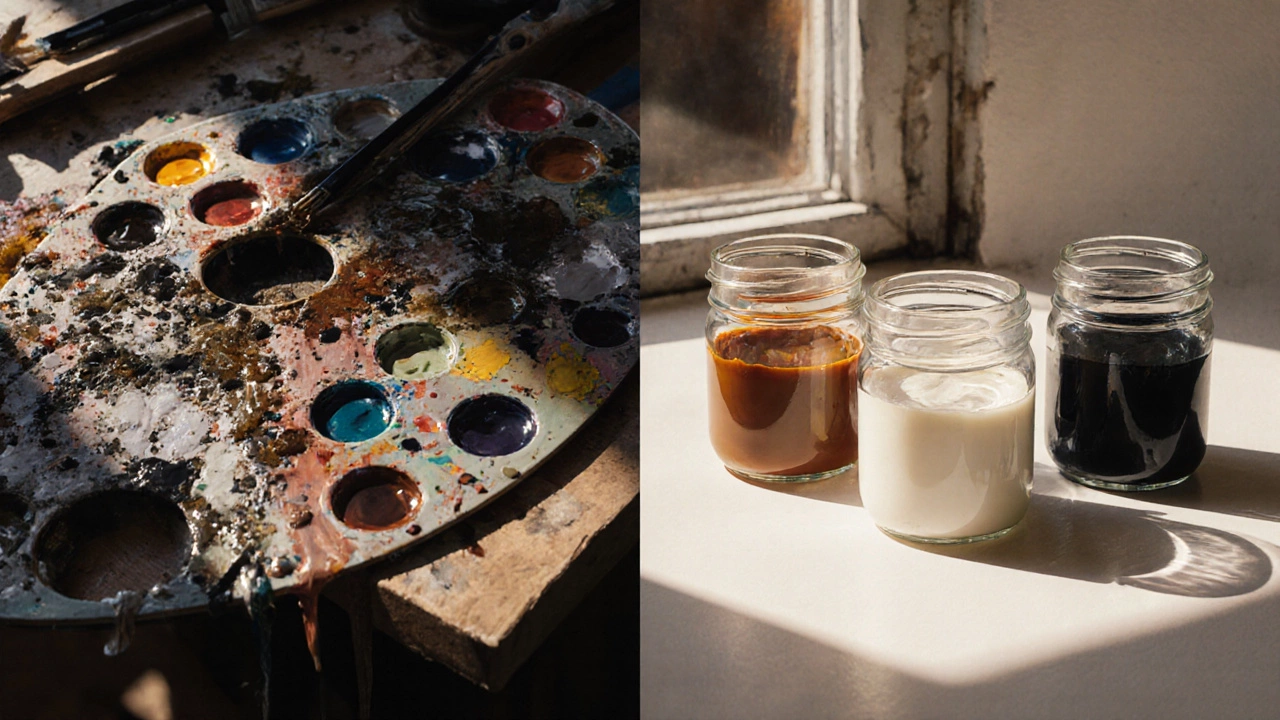Understanding the Three-Bucket Rule in Oil Painting
14 Oct 2025Learn what the three-bucket rule is, how to set it up, and why it improves value control and color consistency in oil painting.
Continue reading...When planning a palette setup, the process of arranging colors and tools before you start a piece. Also known as color palette preparation, it lays the foundation for consistency and speed in any medium. A well‑planned palette works hand‑in‑hand with color theory, the study of how hues interact, to help artists predict which mixes will pop and which will clash. It also relies on paint mixing skills, because the right ratio of pigment to medium decides whether a sky looks brooding or bright. Finally, a solid artist workflow hinges on a tidy palette, cutting down the time spent hunting for the right shade.
Why does palette setup matter? First, it speeds up the creative process. When you pre‑mix a range of values, you spend less time scrambling at the easel and more time focusing on composition. Second, it reduces waste. Knowing the exact pigments you need means fewer empty tubes and less cleanup. Third, it supports consistency across a series of works—critical for exhibitions or client commissions. This is why many professionals start every session by laying out a limited selection of primaries, neutrals, and a few custom mixes based on the project's mood.
The core of any palette setup includes three entities: the color selection, the mixing medium, and the organization method. Color selection draws from color theory; you’ll pick complementary pairs for contrast or analogues for harmony. Mixing medium can be oil, acrylic, watercolor, or digital software—each behaves differently, so the medium influences the amount of binder, solvent, or digital opacity you’ll use. Organization method ranges from a classic paint slab with sections for each hue to a digital swatch library that saves custom RGB values. By linking these elements, you create a workflow where the palette informs the mix, the mix informs the application, and the application feeds back into the next palette decision.
Consider a landscape painter. They might start with a limited earth‑tone palette—burnt sienna, ultramarine, cadmium yellow—and mix variants for sky, foliage, and ground. The artist’s workflow includes a quick test strip on a scrap canvas, adjusting values before committing to the main canvas. This iterative loop—palette setup → test strip → tweak → final paint—shows a clear semantic triple: "Palette setup enables test‑strip iteration, which refines the final artwork." The same principle applies in digital illustration, where a software palette can store HEX codes and automatically apply them to layers, streamlining the process.
Another practical tip: limit yourself to five‑to‑seven colors at a time. This rule, often taught in art schools, forces you to think creatively about mixing rather than relying on a rainbow of ready‑made shades. It also mirrors the way classic masters worked—think of the limited palette used by the Dutch Golden Age painters. By mastering a small set, you’ll discover unexpected hues, like a deep teal that emerges from mixing ultramarine, cadmium yellow, and a touch of Payne’s gray.
When you move from traditional to digital, the principles stay the same, but the tools change. Software palettes let you save swatches, create libraries, and even sync colors across devices. However, the need for thoughtful selection remains—digital brushes can still produce muddy mixes if you start with clashing base colors. So, whether you’re using a wooden palette or a Photoshop swatch panel, the same entity relationships apply: color theory guides selection, mixing medium determines behavior, and workflow dictates organization.
In short, a solid palette setup is the backbone of efficient, expressive art. Below you’ll find articles that break down specific techniques—how to choose complementary colors for landscaping, how to mix al‑luna paints for a contemporary style, and even how digital artists set up their color libraries for 2025. Dive into the collection to sharpen your palette skills and see how a thoughtful setup can transform your creative process.

Learn what the three-bucket rule is, how to set it up, and why it improves value control and color consistency in oil painting.
Continue reading...